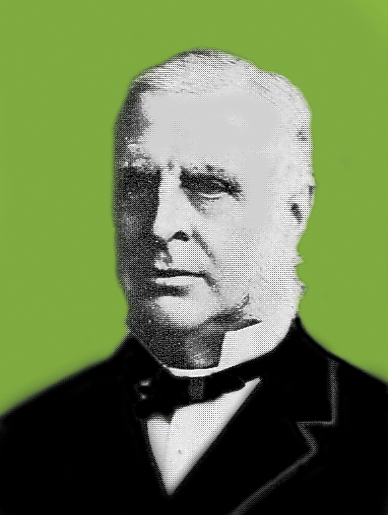
| History of the Manning Formula |
|
Robert Manning was born in Normandy, France, in 1816, a year after the battle of Waterloo, in which his father has taken part. He died in 1897. In 1826, he moved to Waterford, Ireland, and worked as an accountant. In 1846, during the year of the great famine, Manning was recruited into the Arterial Drainage Division of the Irish Office of Public Works. After working as a draftsman for a while, he was appointed an assistant engineer to Samuel Roberts later that year. In 1848, he became district engineer, a position he held until 1855. As a district engineer, he read "Traité d'Hydraulique" by d'Aubisson des Voissons, after which he developed a great interest in hydraulics. From 1855 to 1869, Manning was employed by the Marquis of Downshire, while he supervised the construction of the Dundrum Bay Harbor in Ireland and designed a water supply system for Belfast. After the Marquis' death in 1869, Manning returned to the Irish Office of Public Works as assistant to the chief engineer. He became chief engineer in 1874, a position he held it until his retirement in 1891. Manning did not receive any education or formal training in fluid mechanics or engineering. His accounting background and pragmatism influenced his work and drove him to reduce problems to their simplest form. He compared and evaluated seven best known formulas of the time: Du Buat (1786), Eyelwein (1814), Weisbach (1845), St. Venant (1851), Neville (1860), Darcy and Bazin (1865), and Ganguillet and Kutter (1869). He calculated the velocity obtained from each formula for a given slope and for hydraulic radius varying from 0.25 m to 30 m. Then, for each condition, he found the mean value of the seven velocities and developed a formula that best fitted the data. The first best-fit formula was the following: V = 32 [RS (1 + R 1/3 )] 1/2 He then simplified this formula to: V = C R x S 1/2 In 1885, Manning gave x the value of 2/3 and wrote his formula as follows: V = C R 2/3 S1/2 In a letter to Flamant, Manning stated: "The reciprocal of C corresponds closely with that of n, as determined by Ganguillet and Kutter; both C and n being constant for the same channel." On December 4, 1889, at the age of 73, Manning first proposed his formula to the Institution of Civil Engineers (Ireland). This formula saw the light in 1891, in a paper written by him entitled "On the flow of water in open channels and pipes," published in the Transactions of the Institution of Civil Engineers (Ireland). Manning did not like his own equation for two reasons: First, it was difficult in those days to determine the cube root of a number and then square it to arrive at a number to the 2/3 power. In addition, the equation was dimensionally incorrect, and so to obtain dimensional correctness he developed the following equation: V = C (gS) 1/2 [R 1/2 + (0.22/m 1/2 )(R - 0.15 m)] where m = "height of a column of mercury which balances the atmosphere," and C was a dimensionless number "which varies with the nature of the surface." However, in some late 19th century textbooks, the Manning formula was written as follows:
V = (1/n) R 2/3 S 1/2
Through his "Handbook of Hydraulics," King (1918) led to the widespread use of the Manning formula as we know it today, as well as to the acceptance that the Manning's coefficient C should be the reciprocal of Kutter's n. In the United States, n is referred to as Manning's friction factor, or Manning's constant. In Europe, the Strickler K is the same as Manning's C, i.e., the reciprocal of n.
This contribution was written in April of 2005 by Fadi Khoury, based on the available literature. Fadi graduated with an M.S. degree in Civil Engineering from San Diego State University in June 2007.
Return to ponce.sdsu.edu
Other sites milestones.sdsu.edu
facets.sdsu.edu
chezy.sdsu.edu
onlinechannel.sdsu.edu
manningsn.sdsu.edu
manningsn2.sdsu.edu
| |
| 100831 |